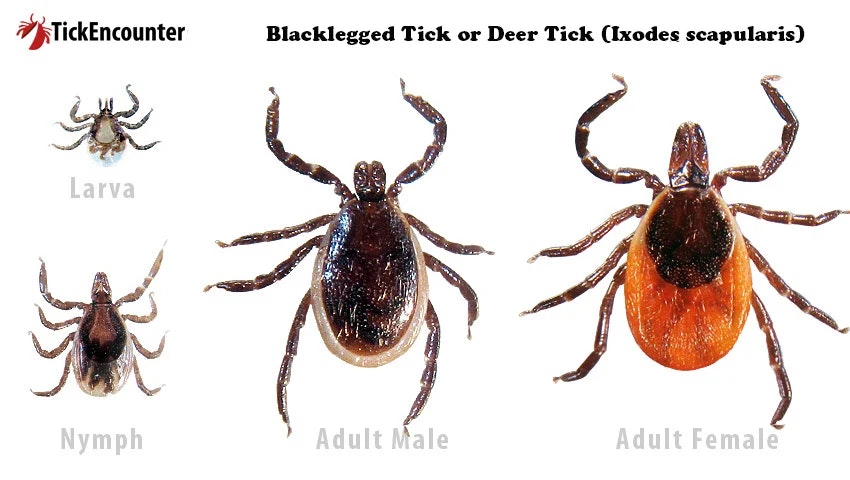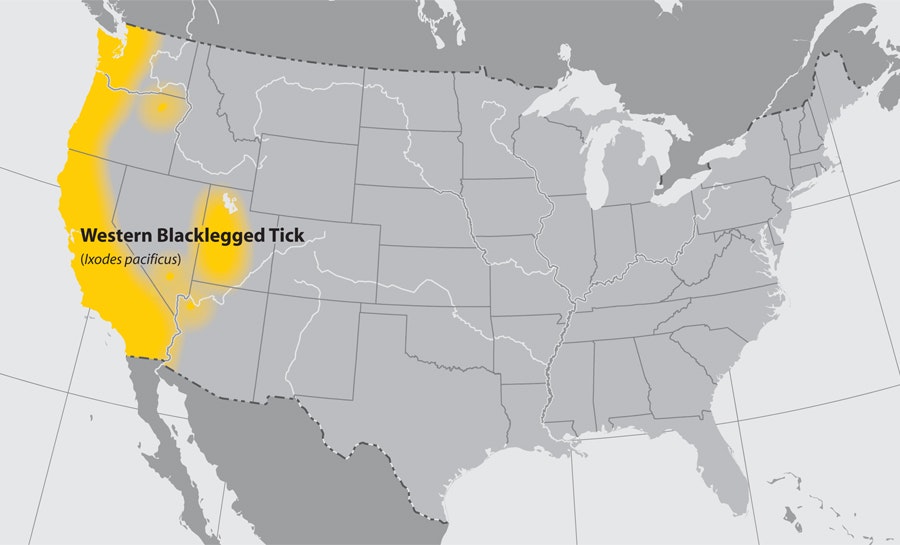Western Black-legged Deer Tick (Ixodes pacificus)
Host Type: 3-Host Tick
Tick ID
** For detailed photos along with descriptions: https://www.inspq.qc.ca/en/detailed-description-ixodes-scapularis-or-black-legged-tick-or-deer-tick

Adult Female
Head
- Basis capituli rectangular.
- Long palps (palps are longer than the basis capituli).
Abdomen
- Partial shield, oval, dark and inornate (uniform color – without light spots).
- Absence of eyes.
- Presence of genital pore.
- Anal groove above the anus.
- Absence of festoons, unlike ticks belonging to other genera (Dermacentor, Amblyomma, Rhipicephalus and Haemaphysalis).
Adult Male
Head
– Basis capituli rectangular.
– Short palps.
Abdomen
- Complete shield, inornate (uniform color – without light spots).
- Absence of eyes.
- Presence of genital pore.
Nymph Stage
Head – same as adult female
Abdomen
- Oval shield, inornate (uniform color – without light spots).
- Absence of eyes.
- The nymph stage differs from the female stage by the absence of a genital pore.
- Anal groove above the anus.
Most abundant in summer, and carry Lyme commonly
Larval Stage
Head – same as adult female
Abdomen
- Oval shield, unornamented (uniform colour – without light spots).
- Absence of eyes.
- The larval stage differs from other stages in that the larva has only 3 pairs of legs and not 4 like all the remaining stages.
- Presence of only 3 pairs of legs.
- Unable to transmit Lyme disease bacteria.
Diseases it can transmit
Lyme Disease (Borrelia burgdorferi & Borrelia mayonii), Anaplasmosis (HGA), Powassan virus.
Distribution in United States

